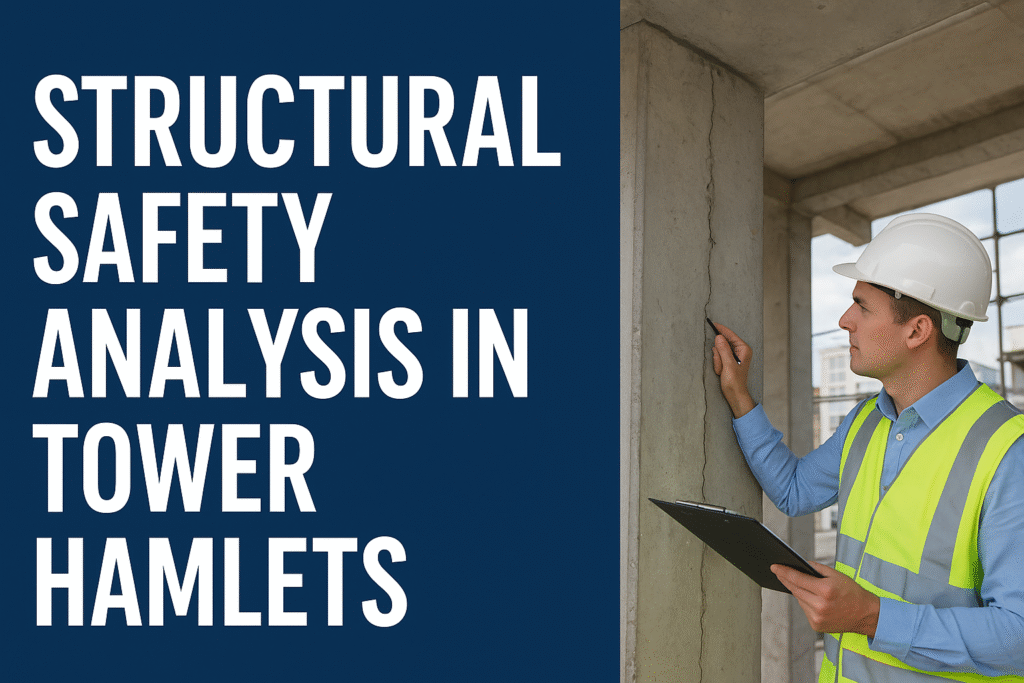Structural safety is one of the most critical aspects of property ownership and development. In Tower Hamlets, where modern high-rise apartments blend with historic buildings, structural stability must be continuously assessed to ensure safety, compliance, and longevity. Structural safety analysis in Tower Hamlets helps property owners, developers, and local authorities identify potential risks and implement solutions before they escalate.
Why Structural Safety Analysis Matters
Structural safety analysis is more than just an inspection—it’s a comprehensive evaluation of how a building withstands environmental, load-bearing, and usage pressures. In a busy borough like Tower Hamlets, this analysis ensures:
- Public safety by reducing the risk of collapse or damage.
- Regulatory compliance with UK building standards.
- Property value protection, as well-maintained structures retain higher market worth.
- Early detection of issues such as cracks, corrosion, or foundation weaknesses.
By investing in structural safety analysis in Tower Hamlets, property stakeholders safeguard both human life and financial investment.
Key Elements of Structural Safety Analysis
A professional structural safety analysis typically involves:
- Load assessment – Evaluating the building’s ability to handle weight and usage.
- Material testing – Checking the durability of concrete, steel, wood, and other components.
- Foundation evaluation – Ensuring stability against soil movement and subsidence.
- Environmental impact review – Considering risks from weather, pollution, and flooding, particularly relevant in Tower Hamlets’ riverside locations.
- Compliance check – Reviewing adherence to UK Building Regulations and local council guidelines.
Structural Safety Challenges in Tower Hamlets
Due to its diverse architectural mix, Tower Hamlets faces unique structural challenges:
- Historic buildings often require retrofitting to meet modern safety standards.
- High-rise developments demand advanced structural analysis to withstand wind loads.
- Flood-prone areas along the Thames need additional foundation and drainage considerations.
- Urban density means any structural weakness can impact surrounding properties.
This makes structural safety analysis in Tower Hamlets an essential service for developers, landlords, and homeowners alike.
Benefits of Professional Structural Safety Services
Hiring certified structural engineers for safety analysis provides:
- Accurate risk detection with advanced tools and testing methods.
- Cost savings by preventing major repairs through early intervention.
- Peace of mind knowing that the property is structurally sound.
- Support in planning permissions and insurance compliance.
By conducting regular inspections, properties in Tower Hamlets remain safe, compliant, and durable.
Choosing the Right Experts in Tower Hamlets
When selecting a structural safety service provider, ensure they have:
- Local knowledge of Tower Hamlets’ building styles and regulations.
- Accreditation from relevant UK engineering institutions.
- Proven experience in both residential and commercial projects.
- Transparent reporting with actionable recommendations.
Working with the right professionals ensures that structural safety analysis in Tower Hamlets delivers long-term value.
Conclusion
In a vibrant and growing borough like Tower Hamlets, prioritizing structural safety is essential. From historic landmarks to modern developments, every property benefits from thorough structural assessments. By investing in structural safety analysis in Tower Hamlets, property owners can guarantee compliance, extend building life, and most importantly, protect residents and the community.


